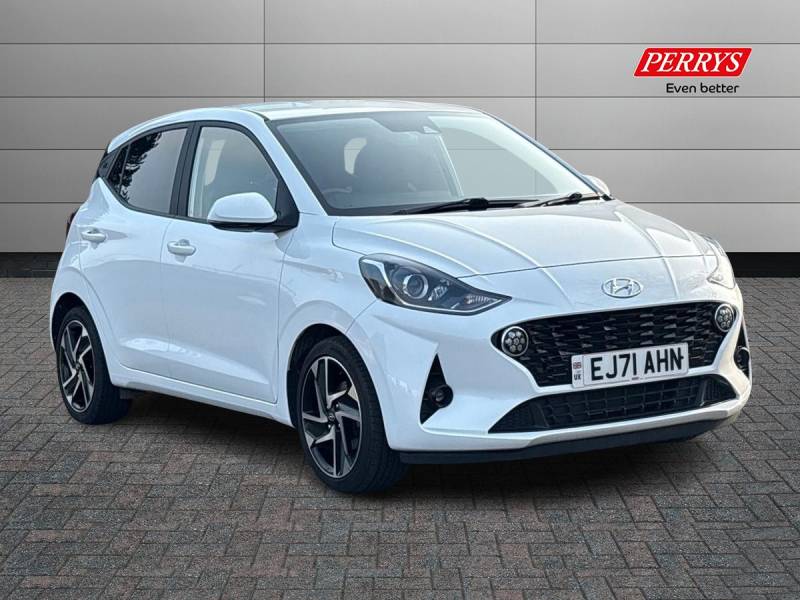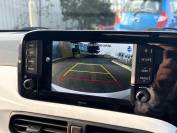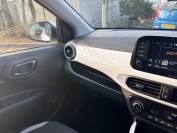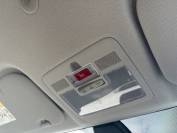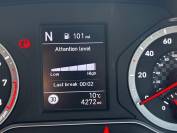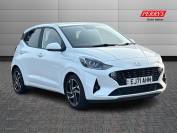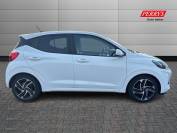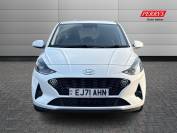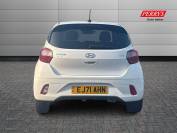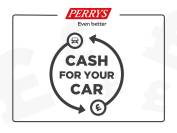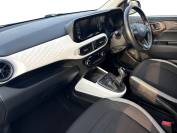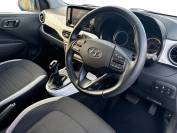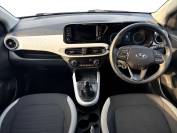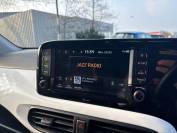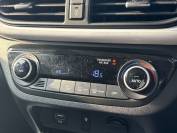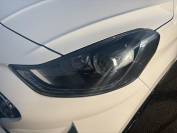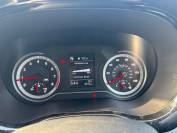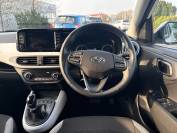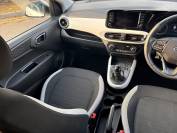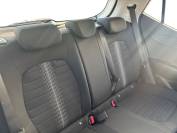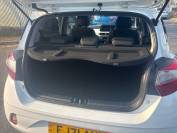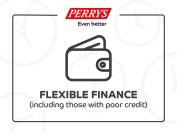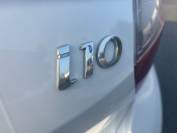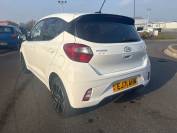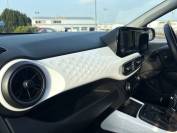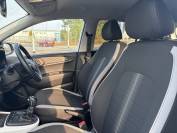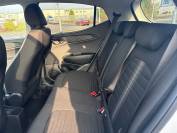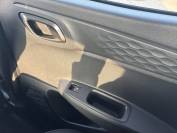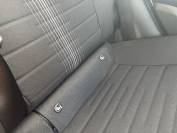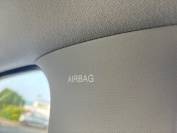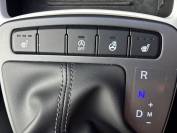HYUNDAI I10 2022 (71)
1.2 MPi Premium 5dr Auto Hatchback
Financial Disclosure
Perrys is Authorised and Regulated by the Financial Conduct Authority. (307639 ) Finance Subject to status. Other offers may be available but cannot be used in conjunction with this offer. We work with a number of carefully selected credit providers who may be able to offer you finance for your purchase. Perrys - 500 Pavilion Dr, Northampton NN4 7YJ. Companies House Number:972286. FCA number: 307639 .
Finance
We can introduce you to a limited number of lenders whose finance products will have different commission amounts payable to us for introducing you to them. This may be in the form of a fixed fee, a percentage of the balance financed, or another incentive.
The amount of commission that we expect to receive will be detailed to you clearly when we present you with a finance payment offer sheet. The exact commission amount payable to us will be presented to you once your finance proposal has been accepted, and always in good time before you complete any retail finance documentation with us.
We are a credit broker and will not provide you with impartial advice.
We actively monitor all finance transactions to ensure compliance and maintain transparency in all our dealings.
Any lenders we use will conduct a full credit search to decide if they can offer you finance. This search will show on your credit file and will be seen by other lenders. If the lender is unable to offer you finance, we will try up to three additional lenders, each of whom will record a search on your credit file. If these lenders are unable to offer you a finance agreement, we will then contact you and ask if you wish us to contact further lenders on your behalf.
Finance Products:
We will provide you with information to assist with your funding decision relating to Credit Agreements such as: Hire Purchase, Conditional Sale, Personal Contract Purchase (PCP), Personal Contract Hire (PCH) and Finance Leasing.
We will also send you Finance Product Information / Videos by email.
We do not charge you a fee for our services. Whichever lender we introduce you to, we will typically receive commission from them (either a fixed fee or a fixed percentage of the amount you borrow). A customer may ask for commission disclosure at any time from our initial discussions through to the point when their agreement is set live.

Independent Road Test Video & Review Courtesy of Car and Driving
Introduction
We're going to see far fewer city cars on the market in the coming years, which is welcome news for Hyundai, who back in 2020 reaffirmed its commitment to the segment by introducing this third generation version of its popular i10 tiny hatch. It was billed as the most hi-tech city car of its period. It might also be the most complete one too.
Models
5dr citycar [1.0/1.0T-GDi /1.2]
History
Some manufacturers will these days tell you that making a tiny little A-segment city car - something less than supermini-sized - just doesn't make economic sense any more. Hyundai disagrees, as you'd expect it might. The Korean brand has long been a European market leader in the city car sector - and aimed to continue that showing with this much improved third generation design. Launched in early 2020, it entered a market vastly reduced in size in terms of competitive offerings. Just prior to this car's introduction, four key rivals - Vauxhall's Viva, the Ford KA+, Suzuki's Celerio, and the Renault Twingo - were discontinued entirely, while combustion-engined versions of the SEAT Mii, the Skoda Citigo and the smart forfour were also deleted, effectively cutting the city car market in half. Which left this i10 - and its identically-engineered cousin the Kia Picanto - fighting against either the Volkswagen up! or Fiat's 500 and Panda models. The Hyundai / Kia conglomerate had pretty much owned this market since 2007 when the introduction of the first generation 'PA'-series i10 fortuitously coincided with the introduction of a UK government's Scrappage Scheme that saw a number of tired old cars being taken off our roads, resulting in a commensurate quantity of buyers with a modest sum of cash in their hands looking for something to buy. The MK1 i10 was an ideal candidate, practical and good looking, plus it didn't cost much and drove well. Sales skyrocketed and for a short while, the i10 was the actually this country's best selling car. It didn't last of course, but this model had established itself in the public consciousness, so market segment leadership was retained when a second generation 'IA'-series version of this design was launched in 2013. That was a very complete product, but it didn't quite have the stylised appeal of some trendy rivals. This MK3 'LA'-series version just might though. It's fractionally bigger, more than a fraction sassier and a great deal more sophisticated than any car this small and affordable has any right to be. It sold in this form until mid-2023, when it was lightly facelifted. It's the pre-facelift models we look at here.
What You Get
Design-wise, this MK3 i10 sat 20mm wider than its predecessor, plus there were slimmer headlights and, on higher-spec models, lovely LED spot lamps that sits at the edges of the wider front grille giving the car a slightly more up-market look. 'Go big' is the strapline Hyundai used for this 3rd generation model and indeed it is slightly bigger than its predecessor, though not by much, length having increased by 5mm. More significant is the way that the clean, smoothly muscled body sits 20mm lower than the previous car and incorporates clever visual touches like a neat X-shaped C-pillar. The cabin of the previous second generation i10 model was class-leadingly spacious and practical - but rather dull compared to obvious rivals. Which is why the Koreans tried a bit harder on the stylistic front with this MK3 version. So we were served up intricate corner vents and a trendier silvered mid-level fascia strip, which on top models features a honeycombed 3D pattern in front of the passenger, which is carried on into the door tops. It's certainly very sophisticated inside for an 'A'-segment city car, mainly because of the inclusion of the largest centre-dash touchscreen in the segment. Avoid entry-level trim and you'll find that this display is 8-inches in size. Between the analogue dials in the instrument cluster, there's another much smaller screen (this one black and white) which gives you trip computer data, a digital speedo and safety info. Over-the-shoulder vision is aided by this MK3 design's lower belt line and slimmer C-pillar, plus provided you avoid entry-level trim you get a rear view camera too. Right, let's consider the back seat. Significant here is the news that the wheelbase increased by 40mm over the MK2 i10, pushing the wheels further out to the corners so as to improve cabin space. And that's paid dividends in the back. This i10 was always a good pick if you wanted a city car with an interior nearly as big as a supermini. With this MK3 design, that's even more the case. Hyundai reckons that a couple of big adults will be quite comfortable in the rear - an achievement for a car of this kind. Out back, the decently-sized 252-litre boot is the same size as that of the previous generation model, which means it remains class-leadingly big. Push the 60:40-split backrest down and capacity rises to 1,050-litres.
What You Pay
Please contact us for an exact up-to-date valuation.
What to Look For
Generally, most MK3 i10 customers we surveyed seemed very happy with their cars. Check all the media tech on your test drive - and the workings of the navigation system (if fitted) to see if it's been kept up to date. Check the touchscreens and Bluetooth connectivity. Check the upholstery for cuts and stains. And inspect the alloy wheels for kerbing damage. Check all the electrical functions too. And insist on a fully stamped-up service history.
Replacement Parts
(approx based on a 2021 i10 1.2 - Ex Vat) Front brake pads sit in the £28-£38 bracket; rear pad sets are around £24-£28. Front brake discs sit in the £50-£138 bracket; rear discs are around £50. An air filter is around £13. An oil filter is around £4. A wiper blade is in the £2-£15 bracket. A starter motor is around £154.
On the Road
City cars need to feel manoeuvrable and darty if they're to work in congested city traffic. The i10 does. This MK3 model's reduced beltline at the front (it's 11mm lower than the MK2 model) and rear of the vehicle (where it's 13mm lower) provides drivers with a better view of the road on both sides. Plus there's less C-pillar obscuration, here 11.9-degrees and down from 13.1-degrees, so drivers have better visibility when performing parking manoeuvres. It also helps that the steering rack's light and easy, perfect for low speed manoeuvring and parking - which is when you'll need the third thing that all tiny urban runabouts really ought to have; a small turning circle. Here, it's 4.86m, which means fewer than three turns of the wheel lock-to-lock, so if you spot a parking space on the other side of the road, you'll find that this i10 will be able to quickly change course and dive into it. Engine-wise, mainstream buyers choose between a three cylinder 1.0-litre 67PS MPi unit or the four cylinder 1.2-litre 84PS 'Kappa' MPi powerplant we'd recommend. Both engines can be had with either five-speed manual transmission or a rather slow and jerky five-speed automated AMT auto gearbox. At the top of the range lies a sporty 'N Line' variant, which gets the 1.0-litre GDi three cylinder turbo engine from the larger i20 supermini, complete with 100PS and 172Nm of pulling power. Fortunately, it only comes with the 5-speed manual gearbox.
Overall
Having seen off many of its main segment rivals, this MK3 model i10 consolidated its strong position in the city car segment. Try one of these and it's genuinely hard to imagine why you'd want to pay a lot more for a Fiesta-sized supermini. This little Hyundai gives you almost as much rear passenger room and boot space as something like that but will cost less to run and will be easier to park. With this third generation model's cabin upgrade, you don't even feel too much like you've bought into a budget-segment car either. In summary, city cars have evolved. These used to be models people went for because they had to. Now, so often, they're little runabouts customers own out of choice. For all the industry plaudits the affordable little first and second generation i10 models received, they weren't cars you'd ever have felt especially joyful about owning. But specified correctly, this improved third generation version absolutely could be. Here's our advice: before you sign for that used supermini you've been thinking of, try one of these first.



